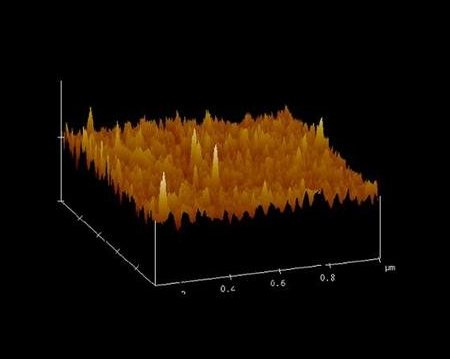Researchers from UCLA's School of Engineering and Applied Science have developed a new family of reverse osmosis membranes for water desalination capable of resisting the clogging that typically occurs when seawater, saltwater, and brackish water are purified.

The membrane has high permeability and can be easily adapted to existing commercial production systems, the researchers explain, and can help significantly reduce the operating costs of water desalination. The research findings were published in the scientific journal Journal of Materials Chemistry.
In desalination using a process of reverse osmosis (reverse-osmosis, RO) high pressure is used to force contaminated water to pass through tiny holes in a membrane. While the water particles manage to pass through the nozzles, mineral salt ions, bacteria and other particulate impurities do not. Over time, these pollutant particles accumulate on the surface of the membrane and this accumulation eventually leads to the clogging of the nozzles and the loss of the membrane's activity. The accumulation of impurities and the subsequent clogging result in higher energy consumption from the pumping systems, their expensive cleaning and the replacement of the membrane over time. The chemistry and the innovative surface topography of the membrane developed at UCLA allow these difficulties to be avoided.
"In addition to having high water permeability, the new membrane also exhibits high repellency and long-term stability," said Nancy H. Lin, an engineer at the university and lead author of the paper. "The construction of the membrane surface does not require a long time, a high reaction temperature or the use of a vacuum chamber. The antifouling feature, which may extend the life of the membrane and reduce operating costs, is better than those found in existing commercial membranes."
The new membrane was prepared by a three-step synthesis. In the first step, the researchers prepared a thin layer of the polyamide membrane composition using conventional polymerization methods. In the next step, they will operate the polyamide surface by flowing plasma (ionized gas) at atmospheric pressure to create active sites on the surface. In the last step, these active sites were used to initiate graft polymerization with a monomer solution to obtain a brush fiber-like polymer layer on the polyamide surface. This polymerization is carried out for a specified time and temperature to control the thickness and structure of the polymer layer.
"In previous years, surface treatment by plasma could only be carried out in a vacuum chamber," explains researcher Yoram Cohen, professor of chemical and biomolecular engineering at UCLA University and one of the authors of the article. "The method was not practical for large-scale commercialization since it was not possible to synthesize thousands of meters of membranes in a vacuum chamber. Such a method is too expensive. But now, with the discovery of the possibility of using plasma at atmospheric pressure, we don't even need to chemically initiate the reaction. It's as simple as "stroking" the surface with plasma, and you can do this on almost any surface."
In this innovative membrane, the polymer chains are in constant motion. The chains are chemically anchored to the surface and are therefore more thermally stable, compared to polymer surfaces that are physically coated. The water flow also contributes to the movement of the "brush" chains and makes it very difficult for bacteria and other colloidal substances to settle on the surface of the membrane.
"If you've ever dived, you know that seaweed moves back and forth with the direction of the water flow," said researcher Cohen. "Then imagine our changing structure in constant motion. Proteins or bacteria need to anchor to several points on the membrane in order to attach to it - an extremely difficult task due to the constant movement of the polymer "hairs". The polymer chains protect and shield the membrane surface below them."
Another factor in preventing adhesion is the electrical charge of the membrane surface. The research team is able to choose the chemistry of the polymer chains and thereby create a desired electrical charge on the surface, so that the membrane will be able to repel particles with an opposite charge. In the next steps, the researchers plan to expand the synthesis of the membrane to a larger scale, make the process continuous and further improve the performance of the innovative membrane in relation to different water sources.
"We are interested in being able to narrow down and create a membrane selection system for a variety of water sources with distinct contamination levels," said the lead researcher. "With such knowledge, the surface properties of the membrane can be optimized using diverse polymeric layers to prevent contamination and clogging of the membrane.
"Consequently, the price of desalination will decrease due to the reduction of the costs of the chemicals (used to clean the membrane nozzles) and due to the reduction of operating costs (replacing the membranes every period of time). In the end, desalination could become a more economical means and serve as a sustainable alternative to natural water sources."
The research findings were published in the scientific journal Journal of Membrane Science.

5 תגובות
What is the connection between this article about a revolutionary membrane for water desalination and this article: https://www.hayadan.org.il/crowding-genes-0507107/
Anything that will lower the price of desalination below NIS 2 per cubic meter.... Good.
Very interesting.
Is atmospheric pressure plasma therapy also available for other applications?
How scalable is the process?
How susceptible is it to contamination?
What fun to read such things that shows that we can also be in the right direction.
After all, if it is at a reasonable price, then there will be no shortage of fresh water in the world